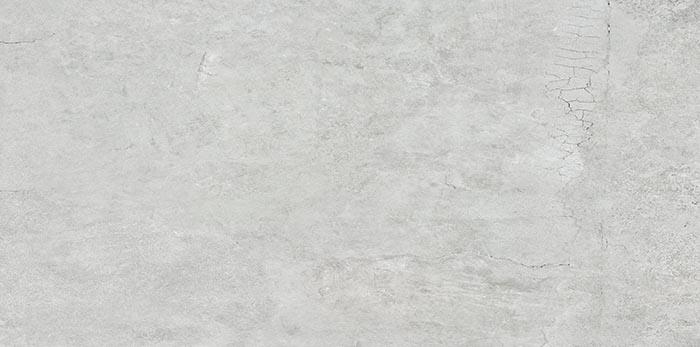
Premium porcelain tiles are harder than ceramic tiles.
Porcelain tiles are more suitable for areas of high traffic.
Porcelain tiles absorb less moisture than ceramic tiles.
Porcelain tiles are more likely to survive a frost; thus, most of them are suitable for use on outdoor patios.
Ceramic tiles (which have a higher moisture content) will be subject to the forces of freeze / thaw on Winter nights if installed outside; thus, they will crack during a cold snap.
Porcelain tiles are far less likely to crack or fail when installed over a wooden substrate, for example a tongue and groove floor, where there may be a lot of movement as people walk across the floor.
Most porcelain tiles are made with floors in mind. However, all tiles can be used on walls, so it’s perfectly acceptable to use porcelain tiles on bathroom walls for example. This is often done with tiles that are rectangular, such as 30 x 60 cm sizes.
Porcelain tiles have extra compounds added to the clay during production, and are composed of finer, more refined sands such as kaolin clays, feldspars, and silica. The resulting mixture is denser and less porous than the clay used for ceramic tiles.
Porcelain tiles are fired at a much higher temperature and at greater pressure during the production process. And often, they are fired for a longer period of time than ceramic. This removes almost all the natural water content.
To be classified as a porcelain tile according to ASTM standard C373, a tile may not absorb more than 0.5% of its weight in water:
Leave a tile in a bucket of water for a day, and then weigh it.
If the weight has increased by more than 0.5%, then it does not qualify as a porcelain tile. Note that in this example, the water is being absorbed by the body of the tile, and not through the top surface, as this is glazed and is practically impervious.

Glazed porcelain tiles have had a glaze applied to the tile face. This glaze is a type of liquefied glass which has been baked onto the face of the tile in a kiln during the manufacturing process. The glaze is impervious. It will usually contain an artistic design or colour(s). The characteristics of the glaze are the same as those of a ceramic tile. The characteristics of the body (or “biscuit”) of the tile are the same as a through-body porcelain tile.
Through-body porcelain tiles have not had a glaze added. The colour or design that is presented runs right through the tile (or biscuit). Being made of porcelain, these tiles are also practically impervious, as porcelain absorbs less than 0.5% of its bodyweight in liquid. Unglazed tiles are usually matt in appearance.
Polished porcelain tiles start off life as unglazed porcelain tiles. An industrial scale buffer then polishes them to a high sheen. This produces a tile face with a highly reflective, mirror-like surface. But note that no glaze (liquefied glass coating) has been added.
Most ceramic tiles have a glaze on their top face. The glaze is similar to a liquid glass that has been fused onto the biscuit, and as you know with a glass window, water does not penetrate glass. The biscuit itself is porous (i.e. it can absorb water), but the biscuit would never be exposed to water in a practical application. Once installed correctly, and with grout (which is virtually impervious), glazed ceramic tiles are perfectly suited to bathroom applications.
The biscuit of a porcelain tile, by comparison, absorbs virtually no water. If you hold a porcelain tile upside-down in your hand and pour water onto the back of it (the rear is not glazed), the water will simply run off it.
Thus, you may be surprised to read that it's also possible to get unglazed ceramic tiles. These are somewhat of a speciality, such as terracotta. As you can guess from the above information, they would have to be sealed prior to use, as their surface is porous.
It all sounds like ceramic is an inferior product to porcelain. This is not true; it's simply a different product.
Cost:
Ceramic is usually significantly cheaper than porcelain. The raw materials, production costs, and transport costs (ceramic is lighter) are all lower. On average, porcelain is £3 - £5 more per square metre than ceramic.
On a bathroom wall, where there is no need for extra strength, a ceramic tile performs as well as its porcelain counterpart. Indeed, your tiler will be pleased when it comes to drilling holes to hang showers, mirrors, and accessories - it's far easier to drill through ceramic than porcelain.
When tiling over a screed or smooth concrete floor at home, there is no difference between having ceramic or porcelain floor tiles. You should choose the design you prefer the most and go with it. For an upstairs bathroom floor, where it's more likely to receive regular shoes or slippers rather than football boots, a ceramic floor tile will be fine.
DIY Installation:
If you're considering installing tiles yourself, the less dense ceramic will be much easier to cut using a wet tile saw or snap tile cutter. In fact, cutting porcelain would only be recommended for the more experienced DIY'er. And even if a professional is installing tiles, ceramic might be the better choice if the tiles will not have to withstand heavy traffic, and the tiles have to be cut around a multitude of unusual shapes and corners during installation.
Underfloor Heating:
Underfloor heating or hydronic heating coils can be used underneath both ceramic and porcelain tiles.
Rectified Tiles:
Both ceramic and porcelain tiles can be rectified after production; although in practice, it is usually only porcelain tiles that are sold in a rectified form.
You may like:
Copyright © 2021 Guangzhou Weyes Network Technology Co., Ltd. | All Rights Reserved